A social media crisis can hit any brand, big or small, at any time. A social media crisis isn’t just a bad comment or two; it’s a wave of negativity that can damage your brand’s reputation overnight. I’ve seen brands stumble and fall because they weren’t prepared. But it doesn’t have to be that way.
When a social media crisis strikes, every second counts. You need to know how to react swiftly and smartly. I’ve learned these lessons the hard way, dealing with angry customers, viral misinformation, and unexpected backlash. The key is to stay calm, assess the situation quickly, and respond effectively. In this article, I’ll walk you through every step, and at the end, you’ll be ready to handle any social media crisis with confidence.
Key Points
- In a social media crisis, quick action is important. Ignoring the problem or delaying a response can make things worse.
- Monitoring social media channels regularly is key. This helps identify potential issues before they escalate into a full-blown social media crisis.
- Social media moves fast, and what starts as a small issue can quickly turn into a major problem if not handled properly.
- In a world where social media can make or break your brand, mastering social media crisis management is essential.
- Crises offer valuable lessons. You gain insights into customer expectations and potential improvements by analyzing what went wrong and how it was handled.
Social Media Crisis
A social media crisis happens when negative events or bad publicity spread quickly online. This could be a result of a company mistake, a controversial post, or a dissatisfied customer’s complaint going viral. For example, in 2017, Pepsi faced a social media crisis after releasing an ad featuring Kendall Jenner that was criticized for being insensitive to social justice movements. The backlash was immediate, with users expressing outrage and mocking the brand across various platforms. Social media moves fast, and what starts as a small issue can quickly turn into a major problem if not handled properly.
When a social media crisis hits, it can damage a brand’s reputation. People share their opinions and experiences widely, and the bad news can reach thousands or even millions in a short time. It’s important to act quickly. Addressing the issue openly and honestly can help control the damage. Ignoring the crisis or responding poorly can make things worse.
Monitoring social media channels regularly is key. This helps identify potential issues before they escalate into a full-blown social media crisis. Being prepared with a plan on how to respond can make a big difference. Having a dedicated team to manage and respond to online feedback is also crucial. A social media crisis involves a rapidly spreading negative event online. Quick, honest responses and regular monitoring are important in managing and mitigating the impact. The expertise lies in handling these crises effectively to protect and even improve the brand’s reputation.
Social Media Crisis Management
Social media crisis management involves handling unexpected and potentially damaging situations on social media platforms. This can range from negative comments to full-blown PR disasters. The goal is to protect a brand’s reputation and maintain customer trust.
In a social media crisis, quick action is important. Ignoring the problem or delaying a response can make things worse. Monitoring tools help identify issues early. When a crisis hits, it’s essential to assess the situation. Understand what happened, who is affected, and the potential impact. Then, communicate openly and honestly with your audience. Admit any mistakes and outline steps being taken to resolve the issue.
Additionally, preparation is a big part of social media crisis management. Have a crisis management plan ready. This includes guidelines on how to respond, who will respond, and what messages to convey. Training team members ensures everyone knows their role. Practice scenarios to test the plan and make adjustments as needed.
In social media crisis management, consistency is key. Deliver a unified message across all platforms. This prevents mixed signals and confusion. Keep the audience updated regularly. Transparency builds trust. Show that you’re taking the crisis seriously and working towards a solution. After the crisis, evaluate the response. What worked? What didn’t? Use these insights to improve future social media crisis management strategies. Continuous learning helps better prepare for the next crisis.
Remember, social media crisis management is not just about damage control. It’s also about learning and improving. Every crisis is an opportunity to strengthen your brand’s resilience and trustworthiness
See also: The Best 15 Crisis Management Companies You Need Right Now
Benefits of Social Media Crisis Management
In a world where social media can make or break your brand, mastering social media crisis management is essential. It not only protects your reputation but also enhances customer relationships, improves internal processes, and drives continuous improvement. By incorporating these strategies, your brand can confidently weather any storm and emerge stronger. I will break down these benefits for you to understand better.
#1. Rapid Response
When a crisis unfolds on social media, acting quickly is crucial. Immediate responses can halt the spread of negative sentiment and calm your audience. Also, by monitoring social media constantly, you can catch issues early and address them before they escalate. This quick action shows your audience that you care and are on top of the situation.
#2. Protecting Your Reputation
Your brand’s reputation is everything. Effective crisis management helps safeguard this reputation by addressing problems head-on. In addition, by responding clearly and honestly, you demonstrate accountability and build trust. This trust not only keeps your current customers loyal but also attracts new ones who value transparency and integrity.
#3. Building Stronger Customer Connections
Handling a crisis well isn’t just about damage control; it’s also an opportunity to deepen your relationship with customers. By addressing concerns publicly and offering solutions, you show empathy and understanding. Also, this approach can turn a negative situation into a positive interaction, strengthening customer loyalty and trust.
#4. Enhancing Team Coordination
Dealing with a social media crisis requires seamless internal communication. Effective crisis management encourages collaboration across departments, ensuring everyone is on the same page. This teamwork leads to faster decision-making and a unified response, reinforcing your brand’s reliability and cohesiveness.
#5. Learning and Growing
Crises offer valuable lessons. You gain insights into customer expectations and potential improvements by analyzing what went wrong and how it was handled. This feedback helps you refine your products, services, and customer interactions. More so, successfully navigating a crisis also showcases your brand’s resilience and ability to adapt, turning challenges into growth opportunities.
See also: Brand Crisis Management: 7 Tested Tips
Social Media Crisis Example
Social media can make or break a brand in minutes. From companies to celebrities, no one is immune to a social media crisis. These crises offer valuable lessons on what to do (and what not to do). Here are examples of social media crises and how they were resolved.
#1. United Airlines’ Passenger Removal Incident

United Airlines faced a massive social media crisis when a video surfaced of a passenger being forcibly removed from an overbooked flight. The video, showing a bloodied passenger being dragged down the aisle, quickly went viral, leading to widespread outrage and calls for a boycott.
Resolution
United’s initial response, which defended their actions, only worsened the situation. The CEO’s apology seemed insincere and further fueled the backlash. Eventually, United Airlines issued a more heartfelt apology, took full responsibility, and reached a settlement with the passenger. They also revised their overbooking policies and procedures for handling such situations to prevent a repeat. This included increasing compensation for volunteers to give up their seats and ensuring crew members would be booked on flights well in advance.
#2. Pepsi’s Controversial Ad

Pepsi released an ad featuring Kendall Jenner, where she joined a protest and offered a police officer a Pepsi, seemingly resolving the tension. The ad was heavily criticized for trivializing serious social justice movements and using them to sell a product.
Resolution
Pepsi pulled the ad within 24 hours and issued an apology, acknowledging they missed the mark and did not intend to make light of serious issues. They promised to listen more to their audience and be more sensitive in future campaigns. Pepsi also held internal reviews and discussions to ensure a better understanding and representation of social issues in its advertising.
#3. H&M’s Racist Hoodie
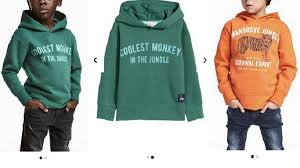
H&M faced intense criticism after featuring a black child in a hoodie with the slogan “Coolest Monkey in the Jungle.” The ad was deemed racist and led to public outcry on social media.
Resolution
H&M quickly apologized, removed the hoodie from all stores, and took down the ad. They met with various advocacy groups to understand the gravity of the situation better and implemented changes to their internal review processes to ensure such mistakes wouldn’t happen again. Additionally, H&M is committed to increasing diversity within their creative teams to better reflect and respect their diverse customer base.
#4. KFC’s Chicken Shortage in the UK
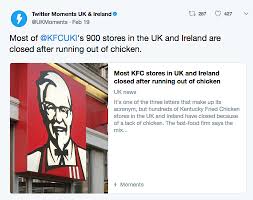
KFC in the UK experienced a supply chain issue, leading to a chicken shortage. This might sound humorous, but for a chicken restaurant, it was a serious problem. Social media was flooded with complaints and jokes at KFC’s expense. Customers were frustrated and disappointed.
Resolution
KFC responded with humor, acknowledging the issue with a cheeky full-page newspaper ad that rearranged their logo to spell “FCK.” They also worked diligently to resolve the supply chain problems and kept customers updated on social media. This approach helped turn a crisis into a moment of brand humanity.
#5. Uber’s #DeleteUber Movement
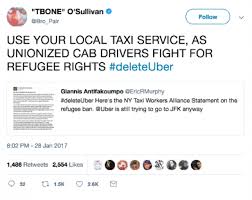
In January 2017, during a protest against the U.S. immigration ban, Uber was accused of trying to break a taxi strike at JFK Airport, leading to the #DeleteUber movement. This movement encouraged users to delete the Uber app, and it gained massive traction on social media.
Resolution
Uber’s CEO, Travis Kalanick, stepped down from President Trump’s advisory council and issued an apology. Uber also announced plans to create a $3 million legal defense fund to help drivers with immigration and translation services. Additionally, Kalanick was later ousted as CEO due to various controversies, and the company worked on improving its corporate culture and public image under new leadership.
#6. Starbucks’ Racial Bias Incident
In April 2018, two black men were arrested at a Philadelphia Starbucks for sitting in the store without making a purchase while waiting for a friend. The incident was captured on video and led to accusations of racial bias.
Resolution: Starbucks CEO Kevin Johnson quickly issued a public apology and met with the men to apologize in person. Starbucks also reached a financial settlement with the men. They closed all U.S. stores for an afternoon to conduct racial bias training for employees. Additionally, Starbucks revised its policies to allow anyone to use their stores without making a purchase.
#7. Dove’s Racially Insensitive Ad

In October 2017, Dove released an ad showing a black woman removing her shirt to reveal a white woman underneath, which many interpreted as suggesting that Dove’s product would cleanse or whiten the user’s skin. The ad was widely criticized as racist.
Resolution
Dove promptly removed the ad and issued a public apology. They acknowledged the oversight and reiterated their commitment to diversity and inclusion. Dove also reviewed their internal processes and increased diversity in their marketing team to prevent future mistakes. They continued their broader “Real Beauty” campaign, which promotes body positivity and diversity.
#8. Chipotle’s Food Safety Issues
Between 2015 and 2018, Chipotle faced multiple food safety issues, including outbreaks of E. coli, norovirus, and salmonella at various locations. These incidents led to severe health consequences for many customers and a significant drop in sales and stock prices.
Resolution
Chipotle responded by closing affected locations and cooperating fully with health authorities. They revamped their food safety protocols, which included new ingredient handling procedures and stricter employee training. Chipotle also launched a transparency campaign, informing customers about their efforts to improve food safety. They introduced promotions and loyalty programs to win back customers
#9. Nike’s Colin Kaepernick Ad
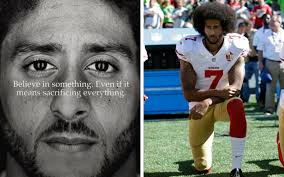
In September 2018, Nike featured Colin Kaepernick, the NFL player known for kneeling during the national anthem to protest racial injustice, in their “Just Do It” ad campaign. This move sparked a polarizing reaction. Some praised Nike for taking a stand, while others boycotted the brand, posting videos of themselves burning Nike products on social media.
Resolution
Nike stood by their decision, defending the ad as a reflection of their values. The controversy led to increased brand visibility and sales among their target demographic. Nike’s stock initially dipped but later reached an all-time high. This example showed that aligning with core values can resonate deeply with loyal customers, even if it risks alienating others.
#10. Gillette’s “The Best Men Can Be” Campaign
In January 2019, Gillette released a commercial addressing toxic masculinity, tying it to their “The Best Men Can Be” slogan. The ad sparked a heated debate, with some praising the message while others criticized it as an attack on traditional masculinity. The controversy played out prominently on social media.
Resolution
Gillette stood by the ad and the message, emphasizing the importance of sparking conversations about positive behavior and social change. They followed up with additional campaigns that highlighted positive male role models and community programs. Despite the mixed reactions, Gillette maintained their position and saw an increase in brand engagement.
Also read: Turning Crisis to Opportunity: How I Help Brands Handle Negative PR Effectively
Social Media Crisis Communication Plan
A social media crisis communication plan is a strategy that helps manage and respond to unexpected negative events on social media. This plan outlines steps to take when a crisis happens, ensuring a swift and effective response.
Benefits of a Social Media Crisis Communication Plan
- Quick Response: A social media crisis communication plan enables a quick and organized response. This helps minimize damage.
- Consistent Messaging: It ensures all communication is consistent. Consistent messaging avoids confusion and maintains brand integrity.
- Reputation Management: Managing a social media crisis effectively protects and can even enhance the company’s reputation. A well-handled crisis shows competence and responsibility.
- Stakeholder Reassurance: A clear plan reassures stakeholders. It shows that the company is prepared and capable of handling crises.
- Prevention of Escalation: By addressing issues swiftly, a social media crisis communication plan prevents small problems from escalating into bigger issues.
- Recovery Support: The plan supports the company’s recovery post-crisis. It outlines steps for rebuilding trust and improving processes.
This social media crisis management and communication plan template below will provide you with the resources and instructions to:
- Develop a detailed crisis communication strategy customized for your brand
- Recognize possible crisis situations and prepare approved responses in advance
- Organize and delegate responsibilities to your crisis management team
How to Identify a Social Media Crisis?
Now, let me tell you, in as much as social media can boost a brand it can also turn things upside down. So, knowing how to spot a social media crisis early is important. Here’s how to identify a social media crisis.
#1. Sudden Spike in Negative Mentions
One clear sign of a social media crisis is a sudden spike in negative mentions. Watch for unusual increases in complaints or negative comments. If your usual feedback is mostly positive and then it shifts, something is wrong. For example, I managed a company’s social media, where we had steady praise, but one day, negative comments exploded. We investigated and found a product defect. Catching it early helped us address the issue quickly.
#2. Influencers and Media Involvement
When influencers or media start discussing your brand negatively, that’s a red flag. Influencers have large audiences, and their opinions carry weight. Media coverage spreads news quickly. During a product launch, we saw an influencer’s negative review go viral. It was crucial to respond swiftly and manage the narrative before it turned into a full-blown crisis.
#3. Unusual Engagement Patterns
Engagement patterns changing drastically can indicate a social media crisis. If you see a sudden surge in comments, shares, or direct messages, dig deeper. This often means users are reacting strongly to something. For instance, if a brand sees an unexpected surge in comments and direct messages overnight, this could indicate a viral post or a widespread issue. Therefore, social media listening tools can track these engagement changes and set alerts for unusual activity spikes.
#4. Sentiment Analysis Shows a Negative Trend
Regularly analyzing sentiment helps spot crises early. Use tools to monitor whether brand sentiment trends are positive or negative. A shift towards negativity is a warning sign. In one case, we used sentiment analysis and noticed a gradual decline in positive mentions. We discovered dissatisfaction with a recent policy change. Addressing it early prevented a larger backlash.
#5. Customer Support Channels Overwhelmed
When customer support gets overwhelmed, it’s often linked to a social media crisis. A sudden increase in support tickets, calls, or chats can indicate issues brewing online. In a past role, our support team flagged an unusual spike in complaints. When we investigated, we found a social media post about a service outage. We quickly communicated updates and resolutions, which calmed the situation.
#6. Competitor Activity
Sometimes, competitor activity can trigger or amplify a social media crisis. If competitors capitalize on your missteps or issues, it can escalate the crisis. Now, let’s say a competitor launches a campaign highlighting a flaw in your product. Recognizing this as part of the crisis can help craft a targeted response to mitigate the impact, and keeping an eye on competitor activities and being prepared with counter-strategies is essential.
How Do You Recover From Social Media Crisis?
Dealing with a social media crisis can be tough. It’s like putting out a fire while everyone’s watching. But, with the right approach, you can turn things around. Here’s my contribution on how to deal with a social media crisis effectively and also recover from it quickly.
#1. Acknowledge the Crisis Quickly
Act fast. The first step in recovering from a social media crisis is acknowledging it. Silence or denial can worsen the situation. Also, admit that there’s a problem, show empathy, and assure your audience that you’re taking steps to address it.
#2. Assess the Situation Thoroughly
Understand the root of the social media crisis. Analyze what went wrong, who is affected, and how widespread the issue is. This assessment helps in formulating a response that is both effective and appropriate.
3. Communicate Openly and Honestly
Transparency builds trust. Keep your audience informed about what happened and what steps you’re taking to resolve the crisis. Avoid jargon and be clear. People appreciate honesty and are more likely to forgive mistakes if they feel they’re being treated with respect.
#4. Engage with Your Audience
Respond to comments and messages promptly. Also, show that you’re listening and that you care about their concerns. Engaging directly with your audience can help mitigate the damage and rebuild trust.
#5. Implement a Crisis Management Plan
Having a crisis management plan in place can make a huge difference. This plan should outline steps to take during a crisis, key people to contact, and guidelines for communication. A well-prepared team can handle the crisis more effectively.
#6. Learn from the Crisis
Every crisis is a learning opportunity. Conduct a post-crisis analysis to understand what went wrong and how it can be prevented in the future. Use these insights to improve your strategies and avoid repeating mistakes.
#7. Monitor the Situation Continuously
Keep an eye on the ongoing reactions. Use social media monitoring tools to track mentions and sentiment. This helps in understanding if your response is working or if further action is needed.
#8. Rebuild Your Reputation
Once the immediate crisis is managed, focus on rebuilding your reputation. Share positive content, engage with your audience positively, and demonstrate your commitment to making things right. Over time, consistent positive actions can help restore your brand’s image.
Recovering from a social media crisis isn’t easy, but with the right approach, it’s possible to regain trust and emerge stronger. By acting quickly, being transparent, and learning from the experience, you can turn a negative situation into a chance for growth.
Knowing the common types of social media crises can prepare you to handle them effectively. Let’s fully explain all four types of social media crises. Also, see the infographic below for more illustrations.
What Are the Types of Social Media Crises?
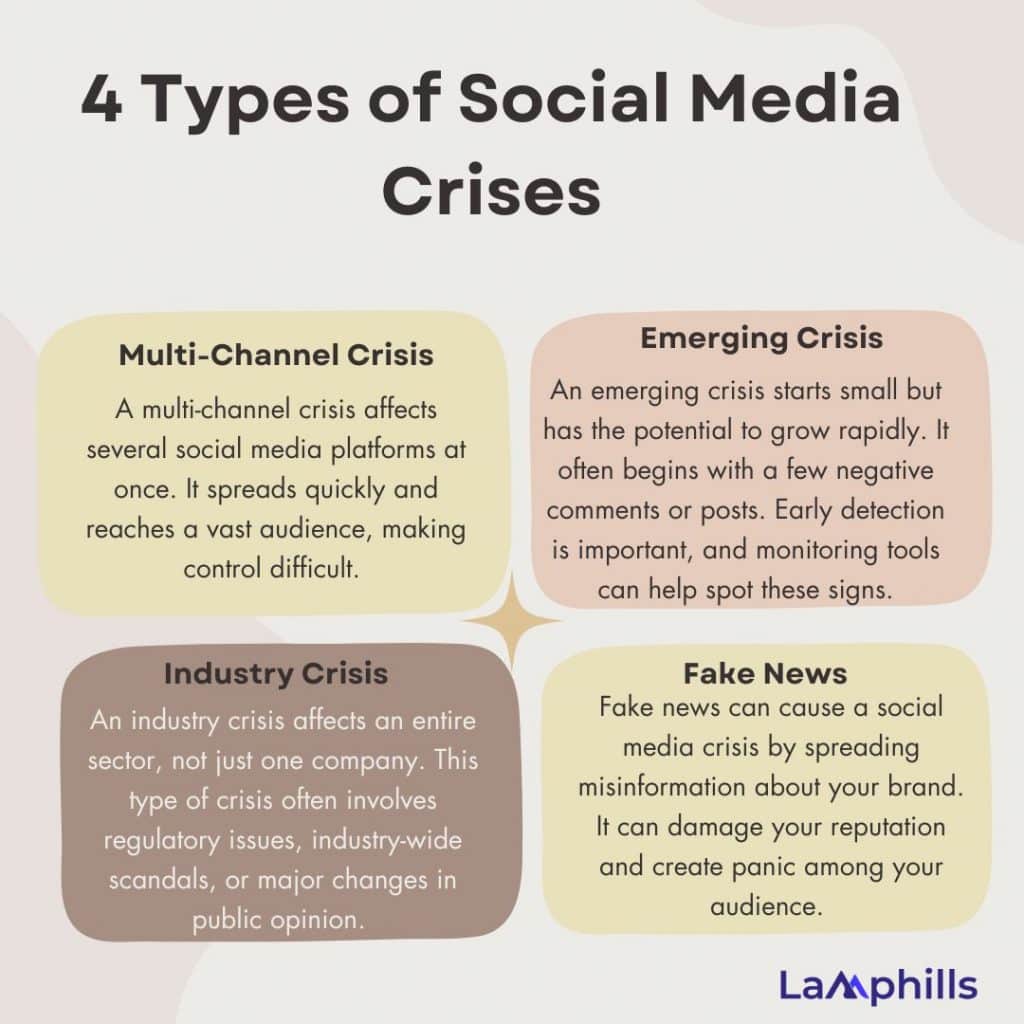
#1. Multi-Channel Crisis
A multi-channel crisis affects several social media platforms at once. It spreads quickly and reaches a vast audience, making control difficult. For instance, a negative story can start on Twitter, and then move to Facebook, Instagram, and beyond. This type of crisis demands a coordinated response across all platforms. Consistent messaging is key. Respond promptly and ensure all teams are aligned. Expertise in social media management helps in monitoring and reacting swiftly.
#2. Emerging Crisis
An emerging crisis starts small but has the potential to grow rapidly. It often begins with a few negative comments or posts. Early detection is important, and monitoring tools can help spot these signs. Addressing issues quickly can prevent them from escalating. Transparency and honesty go a long way. By acknowledging the problem and showing you’re taking action, you can often diffuse the situation before it becomes a full-blown crisis.
#3. Industry Crisis
An industry crisis affects an entire sector, not just one company. This type of crisis often involves regulatory issues, industry-wide scandals, or major changes in public opinion. Companies within the industry need to work together to address the problem. Communication and collaboration are essential. Showing leadership and a proactive approach can help mitigate the impact. Being informed about industry trends and regulations can provide a strategic advantage.
#4. Fake News
Fake news can cause a social media crisis by spreading misinformation about your brand. It can damage your reputation and create panic among your audience. Swift action is crucial. Verify facts and provide accurate information. Use all your channels to correct false narratives. Engaging with your audience directly and transparently can rebuild trust. Expertise in crisis communication helps in managing these situations effectively.
Related Articles
- How to Protect Your Brand Online & Offline (Expert Tips)
- The Best 15 Crisis Management Companies You Need Right Now
- Reputation Recovery: How Experts Turn Negative PR into a Growth Opportunity






